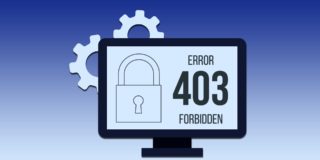Should You Increase Your Page File Size In Windows For Better Performance?
With Windows, the maximum virtual memory in 32-bit is capped at 4GB and the page file size at 16TB. In 64-bit Windows, virtual memory can be 16TB in size with a maximum page file size on 256TB.
Does this mean you need to stock up on gobs and gobs of HDD space for maximum performance? No, because RAM is faster than a hard drive is. It is far more desirable to have more stuff running in RAM than to be stored on a page file; this is the reason why the old adage of "max out your RAM" still holds true to this day.
This is, by the way, why it’s a good idea to go 64-bit. A 32-bit architecture supports a maximum 4GB physical RAM. That’s it. With 32-bit Windows you get "robbed" of almost a full GB of RAM even if you have 4GB physically installed due to what’s known now as a 3 GB barrier. With 64-bit you are currently only limited to what the motherboard can physically hold. Most new PCs today can physically hold 8GB RAM on the low end and 24GB on the high. More is better; that hasn’t changed.
Maxed-out RAM however doesn’t count for much if the hard drive isn’t up to the job concerning the paging file.
The paging file in Windows is stored on your hard drive. If you want to see the information on what Windows is using for space concerning that, do the following:
- Start button / Windows logo
- Run
- Type sysadm.cpl, click OK
- Click Advanced tab
- Under Performance click Settings button
- (From new window that pops up) Click Advanced tab
Under Virtual Memory you will see "Total paging file size for all drives: XXXX MB" where XXXX is the current number of MB used. This number is usually identical to the amount of physical RAM in your system.
Modifying The Page File Size – Should You Do It?
This depends on a few factors.
1. Do you intend to increase or decrease the size?
Decreasing the size is not recommended because it can potentially crash Windows. A lot. Why? Because you’ll go to run something, Windows will run out of virtual memory and… blue-screen.
Increasing the size is OK if your hard drive is in decent condition. See next point.
2. Is your hard drive in decent condition?
"Decent condition" defined: A hard drive under 5 years old that has not gone through super-heavy usage.
The page file in Windows is large by nature, changes often, fragments here and there and so on. An increased page file is best used on a hard drive that can take the punishment, so to speak.
Older HDDs on the other hand are best described as "tired"; a larger page file set may cause Windows to crash. On older HDDs it’s best to keep the page file setting to automatic, i.e. "System Controlled."
3. Do you have the HDD space to dedicate for virtual memory space?
The general rule of thumb is that if you want to increase your page file size, it should be double the amount of physical RAM currently installed in your system as a minimum, and double that as a maximum – if you have the space to spare. If not, don’t do it because that’s blue-screen city.
Example:
If you have 2GB RAM, new page file minimum size is 4GB, maximum 8GB.
If you have 4GB RAM, new page file minimum size is 8GB, maximum 16GB.
4. Do you need to?
This is the most important of the questions to answer.
Most people never have to modify the Windows page file because they simply don’t have any real need to do so. On my desktop PC, I always use the automatic method. However there are a few instances where I would modify it if I needed to:
High-End Gaming PC
If I were a hardcore gamer playing games that had massive requirements for pretty much.. well.. everything, yes I would bump up my page file. This would in turn make my high-end games run smoother and launch slightly faster. Maybe not by a large margin, but any advantage helps in gaming.
Home File Server
File servers do nothing but sit there and serve files, obviously. What happens however is that these are computers that stay on for weeks or months at a time unattended. Giving Windows more page file space allows me to reboot less because it will take a lot longer for Windows to run out of virtual memory – if ever.
If I had a box with Windows being used as a file server and it locked up every few weeks for apparently no reason at all, and I had already ruled out everything else that would cause it (such as brownout, wonky network connectivity, etc.), I would bump up the page file – but again only after ruling out everything else.
I should note that the chance of a Windows-based server lockup being due to a virtual memory file problem is slim at best. But if you’ve already troubleshot everything you can possibly think of, replaced RAM sticks with new and the problem is still there, bumping up the page file may fix it.
Bad RAM
In rare instances a RAM stick will go bad, and it will most likely be the case that only one out of a set doesn’t work. If for example there were two 1GB sticks, the bad one is taken out and then the box runs on 1 until replacements are acquired and installed. Were I placed in that situation I would bump up the page file to compensate for the fact my physical RAM is only half of what it normally is. This would be a temporary solution, and while it wouldn’t run nearly as well as with 2GB, it at least makes the computing experience tolerable until replacement memory was installed – after which I would set the page file setting back to where it was.

















2 thoughts on “Should You Increase Your Page File Size In Windows For Better Performance?”
I found your article interesting, I will be updating my article Subconscious Mind – The Point Of Control
It is on my Vista machine.